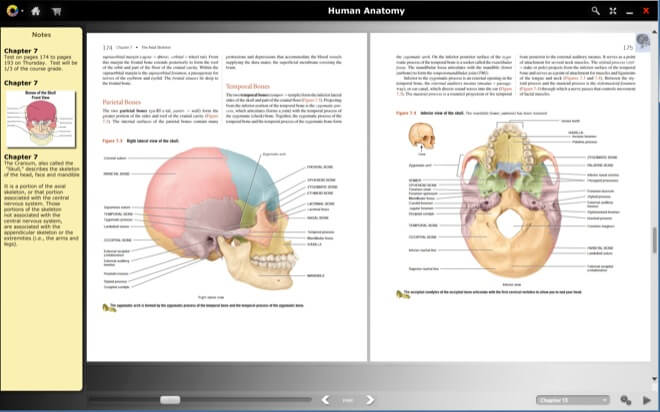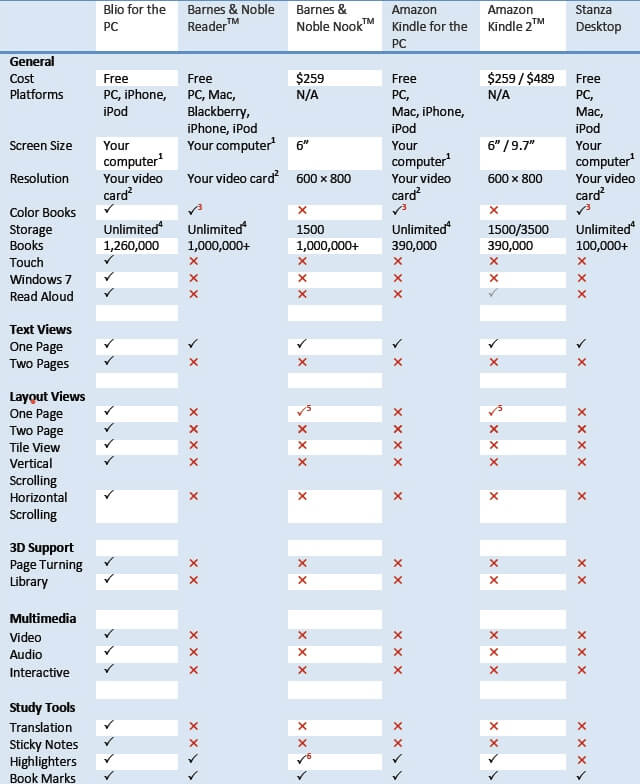Amazon sold more books in digital media than on paper this Christmas and 2010 looks to be the year of the e-reader. Along with Kindle, Stanza, Barnes and Noble Reader, a new hat has been thrown into the ring. Ray Kurzweil, prolific inventor and Singularity enthusiast, is planning to debut Blio at CES 2010 in January. Blio is an e-reader platform, not hardware, that can be used on PC, MAC, iPhone and iPod touch. Developed by Kurzweil company knfb Reader, Blio preserves the original format of books including typography, and illustrations, in full color. It also takes advantage of knfb’s high quality text to speech capabilities (discussed in this video) and supports animation and video content. You can even synchronize a PDF with an audio book to get read-along highlighting. By focusing on the software, and not trying to maintain a hardware device, Kurzweil hopes to provide the most versatile, life-like electronic version of print books and enhance them with multimedia. Best of all, Blio is free.

The race to dominate the electronic reader market is really just starting up. Kindle and Amazon have a firm lead but Stanza, Barnes and Noble, Sony, and Samsung are all staying competitive, not to mention potential tablets from Apple and a host of other companies. Heck, for that matter, the PDF format itself is doing very well and provides much of the same experience as an e-reader for many users. While hardware evolution has focused on the best uses of e-ink or the fastest download times, software is all about formatting. How does the book look? Can I read it the way I want to? Are diagrams legible? By preserving original publishing page layouts, Blio may be providing the nearest experience to actually reading a print book you can find. Of course, the question remains, is that what we really want? As traditional media continues to struggle and new media tries to figure out what it wants to be when it grows up, there’s no clear understanding of how and what humans will be reading in the next decade.
Yet even if e-readers turn out to be a transitional medium, they are still exerting a powerful influence. Best selling electronic books on Amazon are usually free, or very cheap. This may force publishers to rethink how they make money off their products. Which is why it makes so much sense for Blio to be free as well. The e-reader can be uploaded onto an iPhone or kept on your desktop. From there, users will be able to purchase reading materials at whatever price becomes feasible.
 Available books will start with an extensive catalog from Baker & Taylor which should include 50,000+ volumes in January and 180,000+ soon there after. Information released from knfb (see table below) seems to suggest that more than a million books will be available in one format or another. Kurzweil and knfb are working with Google to try to make their extensive catalog of printed materials available for Blio. They are also aiming to have major publishers port their books into PDF for free. Apparently you don’t have to worry about being stuck without something to read.
Available books will start with an extensive catalog from Baker & Taylor which should include 50,000+ volumes in January and 180,000+ soon there after. Information released from knfb (see table below) seems to suggest that more than a million books will be available in one format or another. Kurzweil and knfb are working with Google to try to make their extensive catalog of printed materials available for Blio. They are also aiming to have major publishers port their books into PDF for free. Apparently you don’t have to worry about being stuck without something to read.
The e-reading field is still too young, though, to know where it is going. Every time I see a Kindle, or a Sony Reader, I desperately want to buy one, but I never do. I keep telling myself that waiting just six months will mean a better version and more variety to chose from. So far I’ve been right. Too right, maybe. The hardware and software for electronic books keeps improving too quickly for me to settle on a platform.
 With Blio, the e-readers are seemingly ready to break the bands of separate hardware and dive into multi-platform use. Tablet PCs and Netbooks, which are set to get cheaper and more popular in the next year, may kill the market for dedicated e-reader devices. In the end, it could all come down to the e-book itself. How much will we pay for these things? Like all e-readers, Blio will adopt some form of DRM and proprietary formatting, and publishers continue to try to maintain high prices for their products. Yet anyone with five minutes can find a torrent and pirate a PDF of a book for free. Where’s the balance?
With Blio, the e-readers are seemingly ready to break the bands of separate hardware and dive into multi-platform use. Tablet PCs and Netbooks, which are set to get cheaper and more popular in the next year, may kill the market for dedicated e-reader devices. In the end, it could all come down to the e-book itself. How much will we pay for these things? Like all e-readers, Blio will adopt some form of DRM and proprietary formatting, and publishers continue to try to maintain high prices for their products. Yet anyone with five minutes can find a torrent and pirate a PDF of a book for free. Where’s the balance?
The bigger question may be, as new media kills printed media will the book as a concept die as well? We live in a hyper-linked digital world here on the Internet, rich with comments, multimedia displays, and advertisements. Books as a format are much simpler (some would say better). As we raise a generation that does most of its reading online, we may see an end to books all together (e- or otherwise). Which is perhaps where Kurzweil’s wiley reasoning starts to become apparent. Blio isn’t just an e-ink version of a paper product, it’s a full color multimedia platform that reads text out loud. I don’t know if Blio will be successful, but it just might be the future.
*UPDATE: The Blio website is now live. No more “it’s coming.” The link at the top of the post has been updated. There’s an interesting FAQ, and some great pics, but otherwise not any news. The reader and bookstore both look to be launched in a few weeks.
[image credits: Blio, knfb via Wired]



